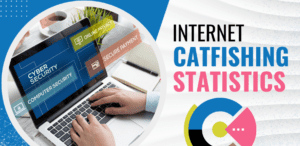America is Sick of Swiping: How Dating Apps Are Finally Evolving
Introduction to Online Dating Fatigue
The popularity of dating apps surged in the early 2010s, promising a convenient and exciting way to meet new people. However, as users spent more time on these platforms, they began to experience diminishing returns. The gamification of dating, characterized by the endless swiping mechanism, has led to a phenomenon known as swiping fatigue. This is where the novelty wears off, and the act of swiping becomes more of a chore than an enjoyable activity. In my new blog post, I will delve into why users are feeling this way and how the industry is responding to these challenges.
What is Swiping Fatigue?
Swiping fatigue occurs when dating apps take the excitement out of online dating. Suddenly, users, especially the fastest-growing user segment, feel overwhelmed and disillusioned. This highlights how modern dating can be severed from genuine enjoyment. To make dating fun again, users are increasingly seeking alternatives that foster deeper connections and reduce the repetitive nature of swiping.
Current Trends in User Behavior
The landscape of online dating is changing. According to recent studies, a significant portion of users are reducing their time on these apps or quitting altogether. This trend is indicative of a broader shift in how people view and use dating platforms. Users report that dating apps are falling back to earth after their initial surge in popularity. The focus on superficial qualities and the fleeting nature of connections have caused many to see these apps as less fulfilling.
The Psychological Impact of Swiping Apps
The psychological effects of using dating apps extensively are significant and often negative. While these apps were designed to make dating more accessible and fun, they have also introduced new stressors and challenges.
The repetitive nature of swiping can lead to emotional exhaustion and burnout. Users often find themselves overwhelmed by the sheer volume of choices, leading to decision paralysis and dissatisfaction. The paradox of choice, where having too many options makes it harder to make a decision, is prevalent in the world of dating apps. Instead of feeling excited about the possibilities, many users feel burdened by the pressure to find the perfect match. This phenomenon can be seen in the increasing number of users expressing that America is sick of swiping.
The Rise of Alternative Dating Solutions
As more people experience swiping fatigue, alternative dating solutions are gaining traction. These new platforms aim to create more meaningful connections by focusing on quality over quantity.
Some apps are moving away from the swipe model entirely, instead encouraging users to take their time getting to know potential matches. Features like detailed profiles, thoughtful prompts, and video chats are becoming more common, helping users engage in deeper and more authentic interactions. These alternatives are designed to reduce the superficiality of traditional swiping apps and foster genuine relationships. This major innovation beyond traditional swiping shows how the industry is evolving to meet user needs.
From Swiping to Slowing Down – Let’s View the New Dating App Features
In response to swiping fatigue, some dating apps are introducing features that encourage slower, more meaningful interactions. For instance, apps like Hinge focus on profiles and prompts that foster genuine conversations rather than superficial swipes. This shift reflects a desire for more substantial connections and a way to more easily access potential partners on a deeper level.
New Features in Dating Apps to Reduce Swiping Fatigue
- Detailed Profiles: Encourages comprehensive profiles for deeper connections. Helps users see beyond superficial traits, addressing why America is sick of swiping.
- Thoughtful Prompts: Using prompts to spark meaningful conversations. This change shows a major innovation beyond traditional swiping.
- Video Profiles: Allows users to upload videos, showcasing personality beyond photos. This helps dating apps feel more authentic.
- Virtual Dates: Enables in-app video calls to build connections before meeting in person. This feature is a significant change in how users interact.
- Personality Based Matching: Prioritizes compatibility over appearance for better matches. This innovation addresses the falling back to earth feeling many users experience.
- Icebreaker Questions: Provides curated questions to initiate conversations, making it easier to see genuine connections.
- Activity Suggestions: Recommends shared activities to enhance engagement. Helps users look for common interests.
- Slow Dating Options: Limits daily swipes to focus on quality over quantity. This addresses swiping fatigue directly.
- Enhanced Privacy Controls: Offers better privacy settings to make users feel safer and more comfortable using the app.
- Feedback Loops: Collects user feedback to improve matching algorithms, ensuring the app evolves with user needs.
Technological and Sociological Factors That May Influence Dating App Trends
Technological advancements and sociological changes are significantly impacting the trends in dating app usage. The introduction of AI and machine learning in dating apps was intended to improve matching algorithms and user experience, but these innovations have not always met expectations.
The rapid pace of technological change can sometimes overwhelm users, leading to frustration rather than satisfaction. Moreover, societal attitudes towards online dating are evolving. Initially seen as an exciting and novel way to meet people, dating apps are now often viewed with skepticism due to issues like catfishing, ghosting, and the superficial nature of swiping. These factors contribute to the growing disillusionment with traditional dating apps. This decline is evident in the way people now view online dating compared to its initial popularity in the early 2010s.
How Dating Apps View and Adapt to Changing User Preferences
In response to growing dissatisfaction, dating apps are introducing new features and innovations to better meet user needs. These changes are aimed at reducing swiping fatigue and creating more engaging and fulfilling user experiences.
Apps are implementing features that encourage meaningful interactions, such as video profiles, virtual dates, and personality-based matching. These major innovations are designed to make dating more fun and less stressful, providing users with new ways to connect beyond the traditional swipe.
Article Conclusion: What the Future Holds for Online Dating
The era of endless swiping is coming to an end as users demand more from their dating apps. The shift towards meaningful connections represents a significant change in the online dating landscape, where quality interactions are becoming more valued than quantity.
To stay relevant, dating apps must adapt to these changing needs by focusing on user well-being and satisfaction. By implementing features that encourage deeper connections and reduce swiping fatigue, these platforms can help create a healthier, more satisfying online dating experience.
Tips for Avoiding Swiping Fatigue
- Limit Your Time on the App: Set specific times during the day to check the app and respond to messages. Avoid constant checking, which can lead to burnout.
- Be Selective: Don’t feel obligated to swipe right on every one. Take your time to read profiles and swipe right only on those who genuinely interest you.
- Engage in Meaningful Conversations: Focus on quality conversations rather than superficial chats. Ask open ended questions and share more about yourself.
- Take Breaks: If you start feeling overwhelmed, take a break from the app. It’s okay to step back and recharge.
- Meet in Person: Once you feel comfortable, move the conversation offline. Meeting in person can provide clarity and help you determine if there is real potential.



